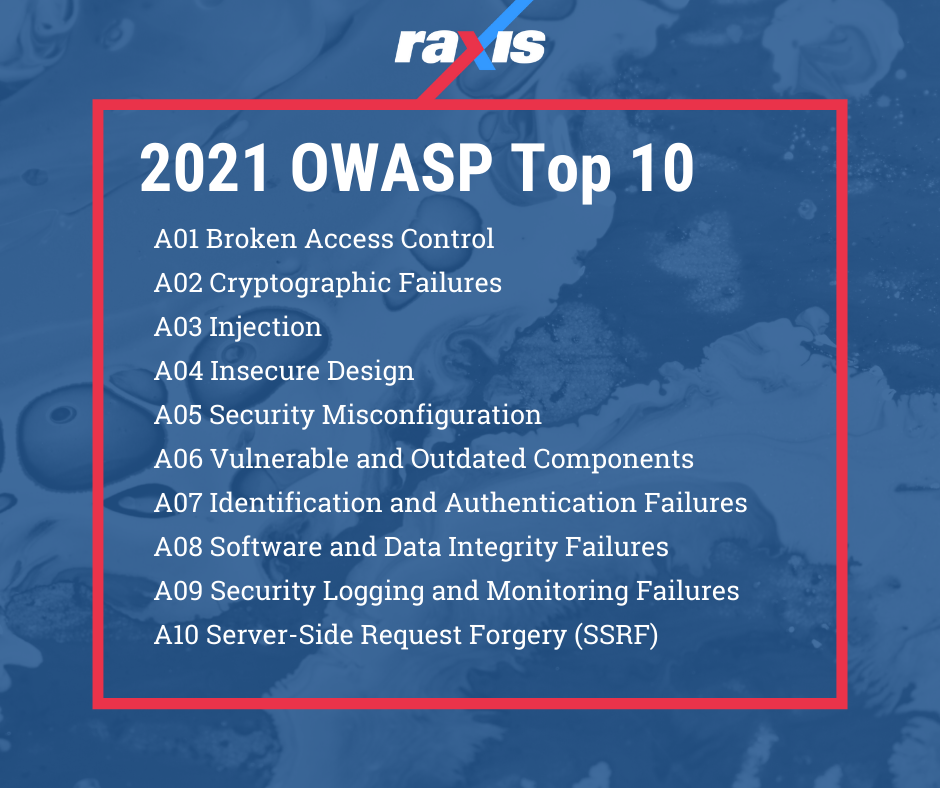This is the first in a series of blog articles that will provide some deeper insight into the vulnerability types that made the latest OWASP Top 10 list.
The Open Web Application Security Project (OWASP) recently released a draft of its periodic Top 10 vulnerabilities list. The open-source list is based on both raw data collected through automated testing, as well as the real experiences of cybersecurity and other IT professionals.
How Raxis uses the OWASP Top 10
The OWASP Top 10 isn’t an exhaustive accounting of all the potential vulnerabilities in applications. Instead, it’s intended as a guide to help security professionals prioritize the most common and urgent threats they or their clients are likely to face. By collecting and analyzing data over time, OWASP is a source of both intelligence and awareness for the people responsible for building secure applications.
As a penetration testing company, Raxis uses the OWASP Top 10 as a reference, ensuring that its customers are protecting against each of the most common threat categories. Of course, our testing goes well beyond the items on the list, but it is an effective starting point for security assessments.
Why injection is a major concern
In 2017, the last time the list was published, injection was the number-one concern. In 2021 this vulnerability moved down into the third position and now includes Cross-Site Scripting (XSS), which was its own category in 2017. However, that doesn’t necessarily mean it has diminished in severity; only that other vulnerabilities have increased in frequency.
How an injection attack works
The underlying cause of injection attacks is from user-supplied data that is not properly sanitized or filtered from an application. This can include various attacks such as SQL-injection, command injection, XSS, and more. While each of these attacks are different, they are all successful because of an application trusting user-supplied data, which led OWASP to combine Injection and XSS in this version of the Top 10.
Raxis is well-versed in Injection attacks and has continued to see a high presence of these vulnerabilities in 2021. In particular, we have continued to see XSS be prevalent in applications, as evidenced by the five XSS CVEs I discovered and helped remediate this year:
- Nagios XI Stored Cross-Site Scripting (XSS): CVE-2021-38156
- PRTG Network Monitor Stored Cross-Site Scripting Vulnerability (CVE-2021-29643)
- ManageEngine Applications Manager Stored Cross-Site Scripting Vulnerability (CVE2021-31813)
- ManageEngine Key Manager Plus Cross-Site Scripting Vulnerability (CVE-2021-28382)
- Cross-Site Scripting Vulnerability in ManageEngine AD Self Service Plus (CVE-2021-27956)
How to prevent injection vulnerabilities
The best defense against an injection attack is to not trust user-supplied data. Specifically, applications should sanitize or filter all user-supplied data before processing it, reflecting it back to users, or sending it to a database. In addition to user-supplied data, applications should not trust data coming from third parties such as external APIs, Active Directory, or other external sources. Four of the above CVEs involved data coming from an external source, which demonstrates the need for applications to not trust any outside data.
Want to learn more? Take a look at the first part in our 2021 OWASP Top 10 Series.

